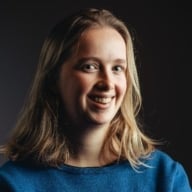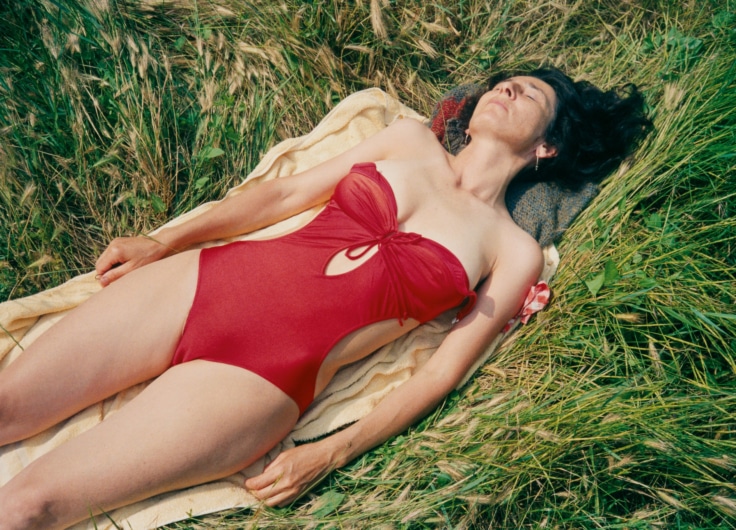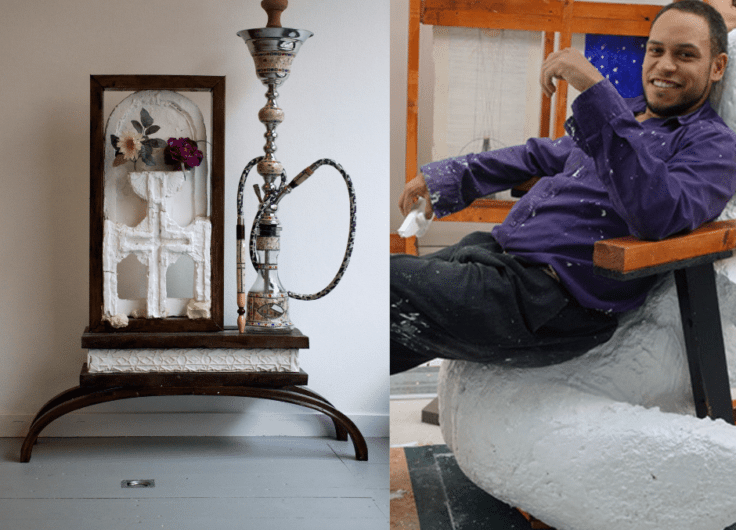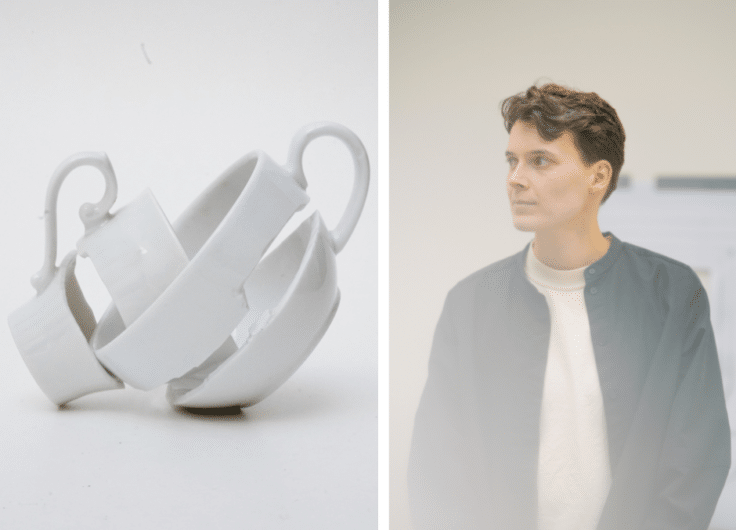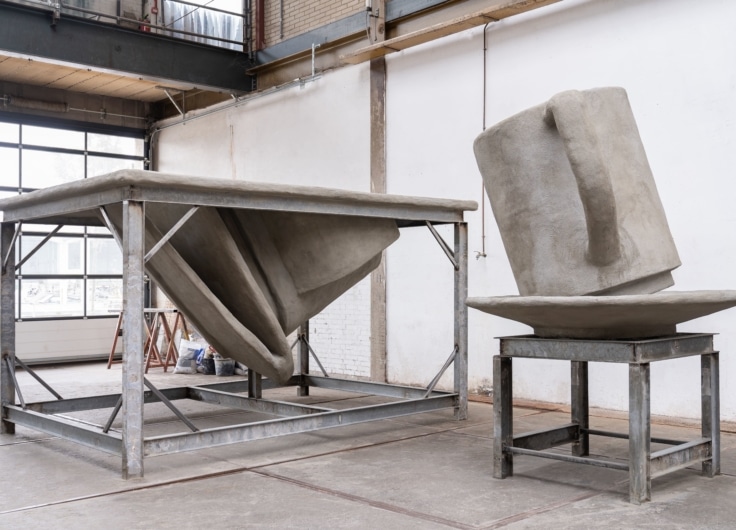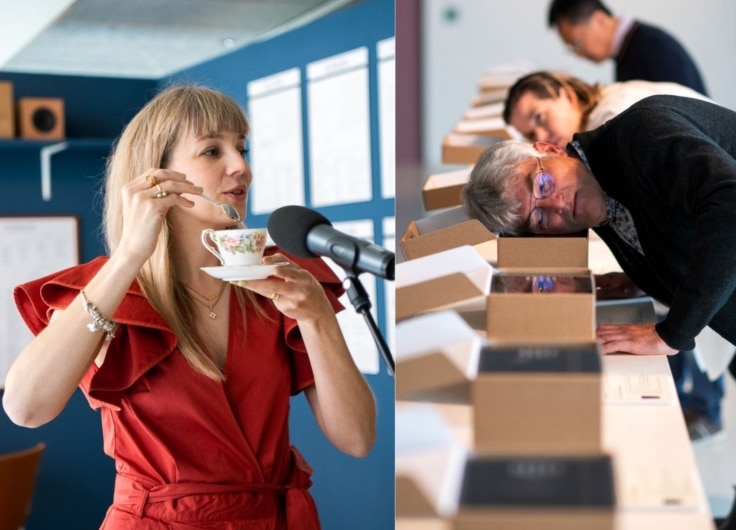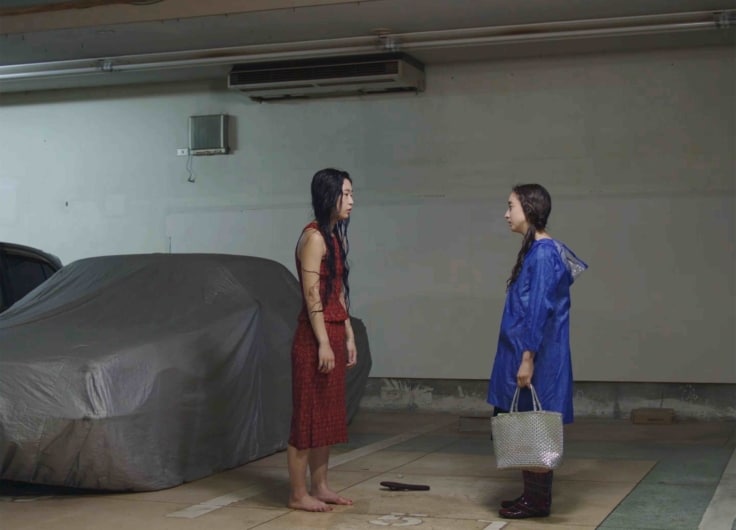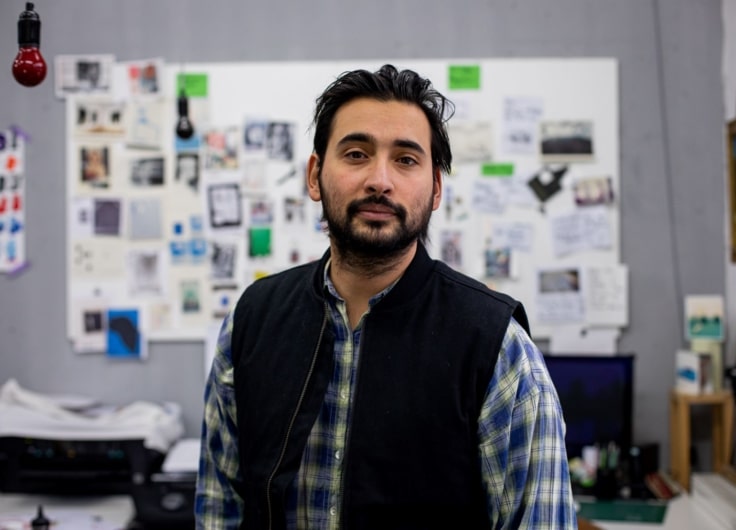Fran Van Coppenolle’s Colourful Sculptures Lift You Up
Bathrobes, fleece blankets, plastic bottle tops, and wooden or steel beams: there’s potential in almost everything Fran Van Coppenolle finds. She makes multicoloured, seemingly weightless sculptures with them, that often float in space. ‘I do everything I can to take away the gloom.’
Somewhere among the fields of West Flanders, there’s a hidden secret. A shed full of floating sculptures. A factory of dreams in Technicolor. This is the creative base of a sculptor – or, as she prefers it, “image builder” – Fran Van Coppenolle, because she works best on the farm that has also been her home for years. She also refers to the place as “Ludwigshaven”, after her father. He is the first in four generations to not become a farmer, but rather a landscape architect, and he systematically renovated the estate. And she got the largest studio she could imagine: the barn with a hayloft. ‘Very idyllic, provided I accept the rain and snow that falls inside as part of the bargain.’
The farm, complete with machines and materials strewn about the place, seems like the ideal incubator. And yet as a child, Fran wasn’t particularly impressed by it. ‘Back then I wanted to live in a normal neighbourhood with other kids,’ she explains. ‘Living isolated between meadows, fields, lakes, and animal stalls, I was bored to tears. And no, it didn’t occur to me to start crafting things. It was only later that I taught myself to keep boredom at bay by starting creative fires.’
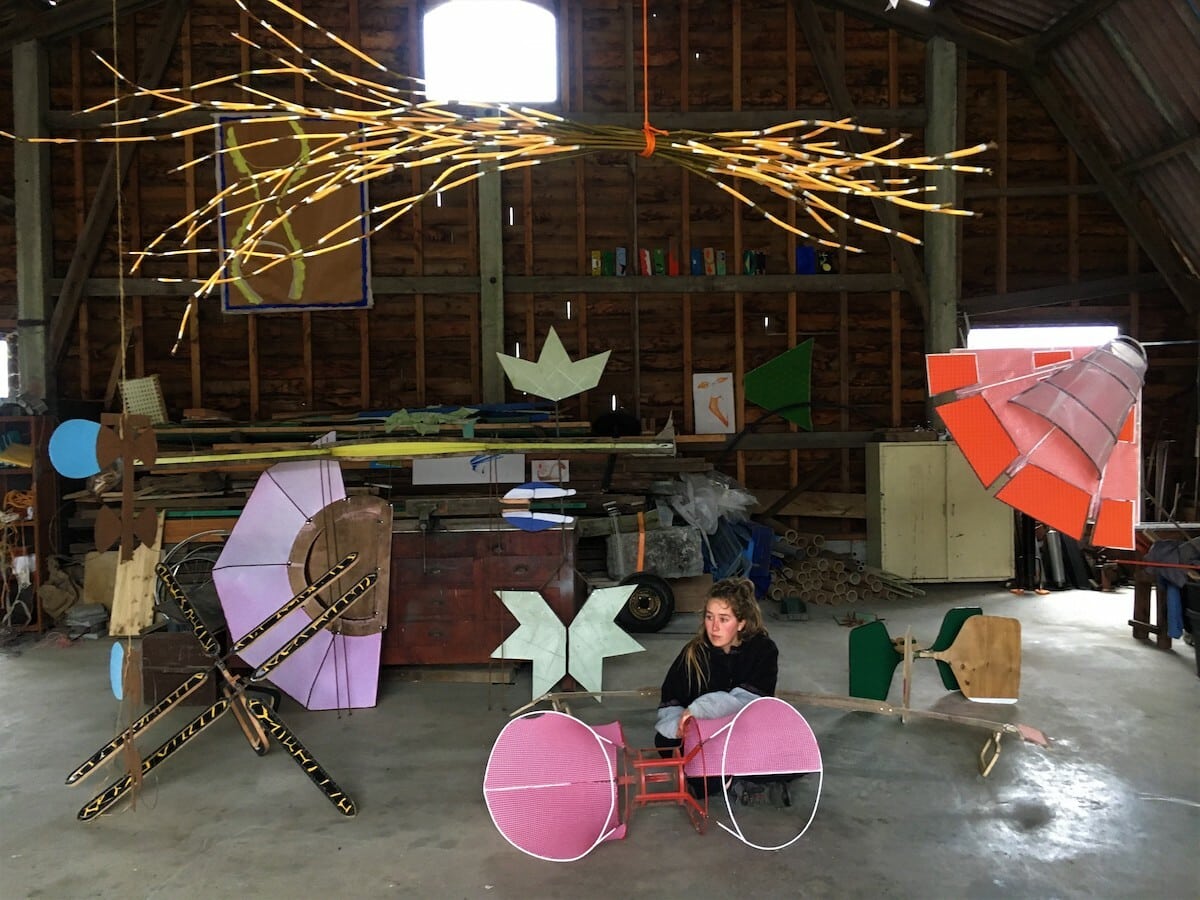 Fran Van Coppenolle in her studio: an old stable with hayloft
Fran Van Coppenolle in her studio: an old stable with hayloft© Seppe Elewaut
The “later” she talks of was at the KASK art school in Ghent. That’s where Van Coppenolle landed after finishing her secondary education, tired of school desks and classroom learning. Art spoke to her somehow, though. Not the concept, per se, but the being-an-artist of it: living without being accountable to another. During the open days at KASK, she saw the sculpture studio and knew that that was where she had to be.
Still, she was surprised that she was accepted. ‘I had been to drawing school, but that was a different kettle of fish. I had the sense that I had to start again from scratch. For two years I was like a parasite on the teachers, sucking up information and copying artists to understand forms. It is striking how suddenly ambition can take hold. All of a sudden you bump into it and you find it exciting and fun.’
Without words
Even now, making feels like playing for her, despite the fact that during her training it was a fight. ‘Then I had the feeling that I had to make something. Everything was also structured like that: first, you thought up an idea, and then you had to make a sketch and produce it in miniature before you could really begin the sculpture. Spontaneity was discouraged. It took me three years to let go of the idea that I had to make something well. Now I’m allowed to just make.’
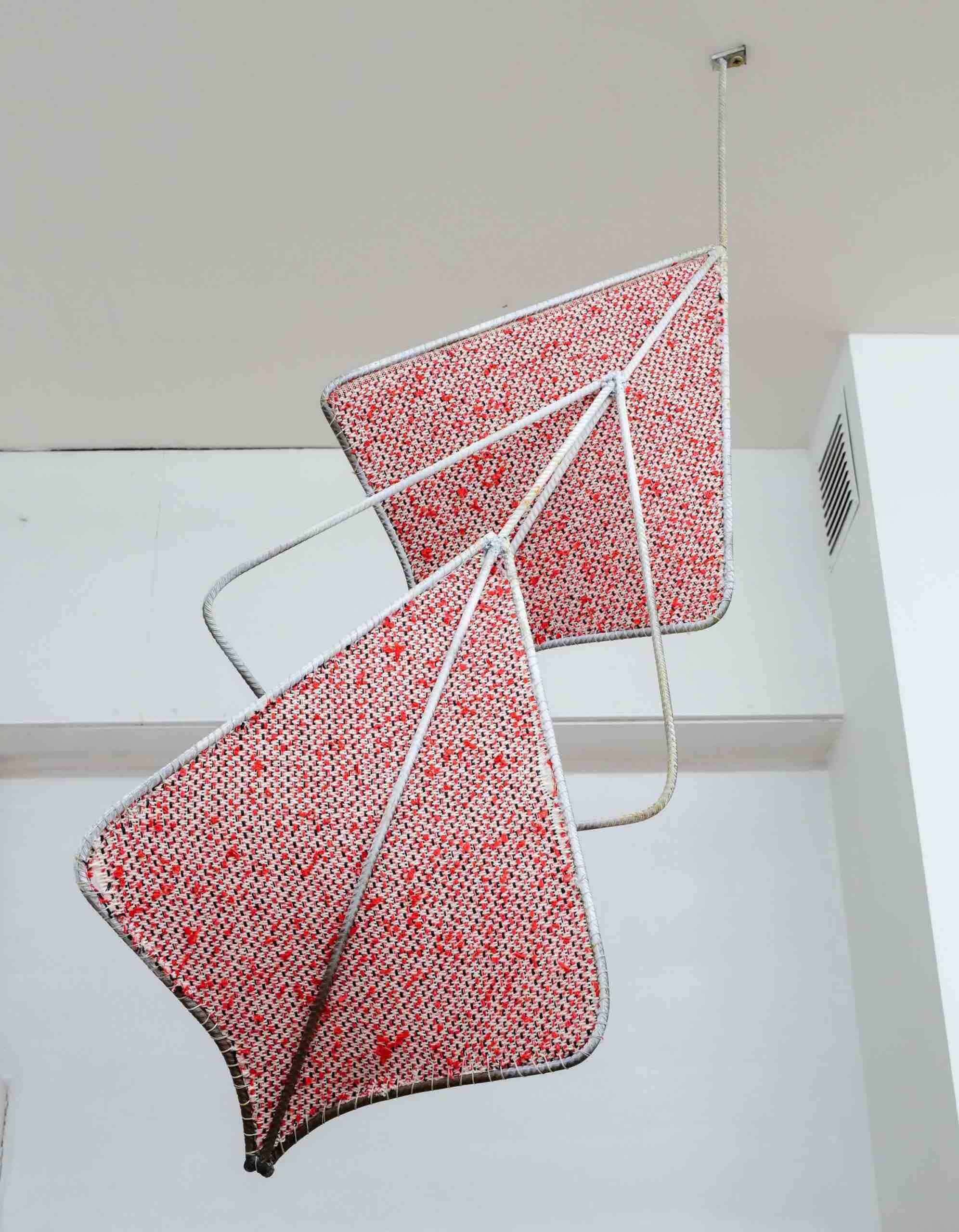 Rd9W28, 2021
Rd9W28, 2021© Transit
Between then and her return to West Flanders there’s another chapter. Following a bachelor’s degree in sculpture at KASK, Van Coppenolle moved to the Royal Academy of Fine Art in Antwerp, but then Corona arrived and she had to return to the farm. Or rather, could return. It turned out to be good for her work, too. ‘I couldn’t work well surrounded by others and was getting stressed out by the noise in the city. Back home in West Flanders I can find peace and calm. Here everything stands still and I’m the only one moving. That helps me observe things better.’
Aside from that, she has the room to create. At the academy, she had to make do with a table and a few square metres, which led to small, often soldered sculptures. ‘That didn’t work,’ Van Coppenolle says herself. ‘It looked very bric-a-brac. In the barn, the scale has changed. My work was pulled out of its context, which allowed it to be what it had to be: bigger and more colourful.’
Van Coppenolle starts a new piece without a plan or sketch. Triggered by a colour, dragonfly or a piece of plastic, she gets a vague image that sets her process in motion. Once she has started, she soon forgets that the image and the sculpture form itself. A chain of action and reaction is activated during which she never thinks ahead, but only in terms of the now. ‘Take practical things, for example: should I make the ends longer or give them a blue tint? I imagine all kinds of scenarios and allow them to constantly change. Because there isn’t something like the best choice. The best choice is always the one that you choose.’
Fran Van Coppenolle: 'It took me three years to let go of the idea that I had to make something well. Now I’m allowed to just make’
Because she is so deeply absorbed in the process of making, she finds it difficult to explain how she made something after the fact. ‘During the creation, there is so much peace inside me that I’m not aware of the moment. At that moment I’m not interested in making an exhibition. That only happens when the work is done. I make, and suddenly there is art.’
She notes that questions of meaning only occur when her works are taken out of their context. ‘In my studio people don’t ask about the content. They feel it. They become quiet; they look; study.’ Maybe that is what her work communicates: a spiritual content that expresses itself not via words but via the senses. She nods. ‘My works contain a lot of universal information that everybody understands, with or without language.’
Spark
To avoid shaping her audience’s view of her work, Van Coppenolle also works with unusual titles: a combination of colour codes, like H25 or Rd9W28. ‘It doesn’t feel right to stick a title onto a work that’s already finished after the fact. The only things I can name are colours.’
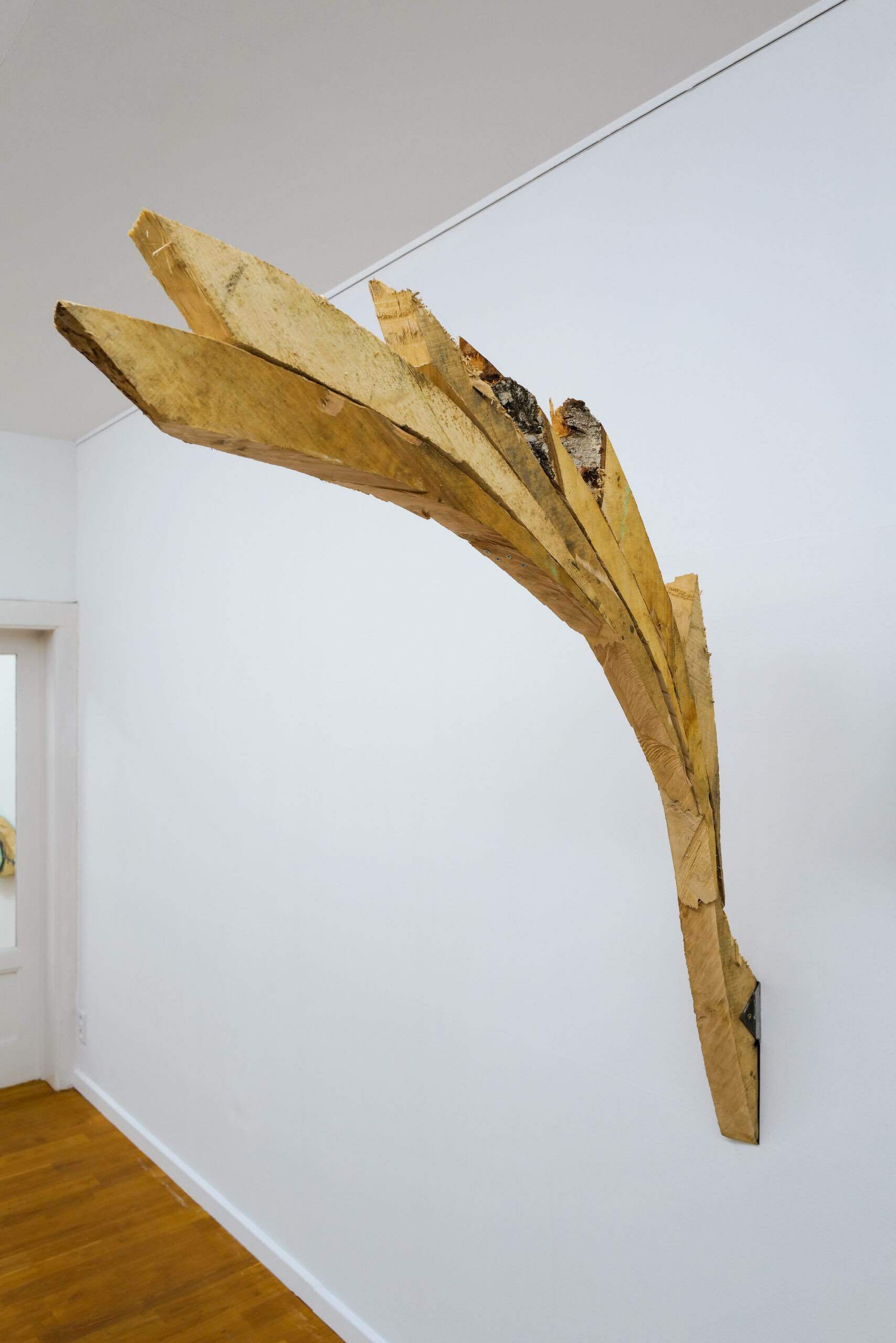 H25, 2022
H25, 2022© Transit
These stacks of colour codes emphasise the experimental character of her work and, of course, the importance of colour. It is her way of interweaving painting and drawing with sculpture. In classical sculpture, after all, there is rarely if ever any colour. She found painting gypsum or stone to be dirty work, and so she went in search of materials that are themselves coloured.
Textiles proved to be ideal, also for creating the large volumes that she is so interested in. ‘I once used a cloth as an unstretched canvas, but it accidentally folded. Since then, I have often made sculptures with a curved, soldered or woven frame over which I stretch fabrics. Because textile bends in different dimensions, it works well with other materials and its softness provides contrast against harder textures like steel, plastic, wood…’
By stretching the textile in two directions, hollow spaces are created. These hollows create a translucent effect that causes colours to appear differently. Light, in all the meanings of the word, is of great importance to Van Coppenolle. ‘I do everything I can to take away the gloom. Even heavy sculptures made of stone; I’ll never display these in a severe or downcast way.’
Fran Van Coppenolle: ‘It doesn’t feel right to stick a title onto a work that’s already finished after the fact. The only things I can name are colours’
For example, she lifts her work from the ground. First, this was due to a lack of space, but it worked wonderfully. ‘On the ground, large volumes feel unwieldy, but suspended from ropes they catch the wind and float like fish in the water.’ For works that are displayed on the ground or against the wall, positioning in the space is also important. ‘The interaction of a work with the space or with other works is a sculpture in itself. That’s why I always want to be there when my works are being installed in a gallery.’
This moment, when artworks leave the studio, is a special one each time it happens. ‘When I’m making something, I’m always stepping back and at a certain point I feel that it is finished. This kick only lasts about 30 seconds, but when I see my work in a new space, that spark comes back. But even this satisfaction is only short-lived, because when she returns to the gallery for the opening she no longer feels a connection with work. ‘I don’t have anything to do with the sculptures anymore, and I can face them with indifference. It’s a closed chapter and I’m already busy with new work.’
Pressure
‘It is a relief that I don’t have to hand everything over to buyers,’ she adds. ‘The best part is not for sale. That’s the making itself.’ It was clear to her that she would make things full-time when she graduated in 2020. That she lives with her father and doesn’t have to rent a studio helps. But there’s always the belief that she’ll make it anyway if she works hard and makes good work.
 Exhibition in Transit Gallery, 2022
Exhibition in Transit Gallery, 2022© Transit
This mentality pays off because last year she won the PrixFintroPrijs Beeldende Kunsten Public Prize and exhibited at Antwerp Art with Transit gallery. This year she had a solo show with the same gallery and with Ada Ventura gallery, she took part in the h3h.-biennale in Oosterhout and received the news that she will collaborate with Simon Masschelein on a masterwork for the Flemish Government Architect.
As wonderful as these opportunities are, they also create pressure, Van Coppenolle notes. As soon as you have some success, you don’t want to let go of it. ‘The last year I have worked a lot with textiles, which has been very satisfying to me. But in the last few months, I’ve made very little, and now I have to start again and that’s scary to me. That’s the trickiest part about the fact that it’s partly a job: I’m afraid I’ll be forgotten if I don’t produce new work for a year.’
At the same time, she’s never entirely out of artist-mode. ‘Art isn’t something that I occasionally do. I wake up with it and go to sleep with it. Even if I’m not physically at work, I’m building up a store of images, materials and ideas in my head. It’s not a job; it’s a way of being.’
In the summer of 2024, Fran Van Coppenolle takes part in ArtZuiderzee, an art route along the Zuiderzee region in The Netherlands, and in Radicale 1924, an artist residency with a parade in the French town of Saint-Cirq-Lapopie

